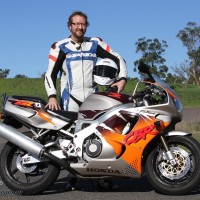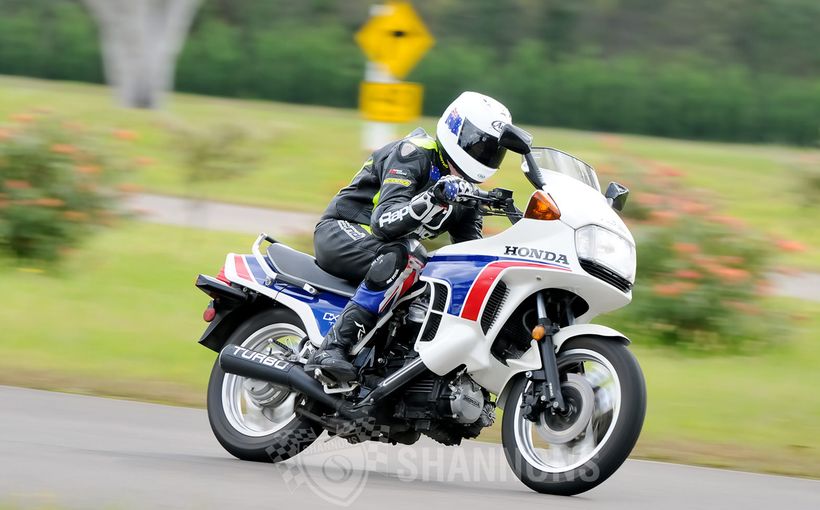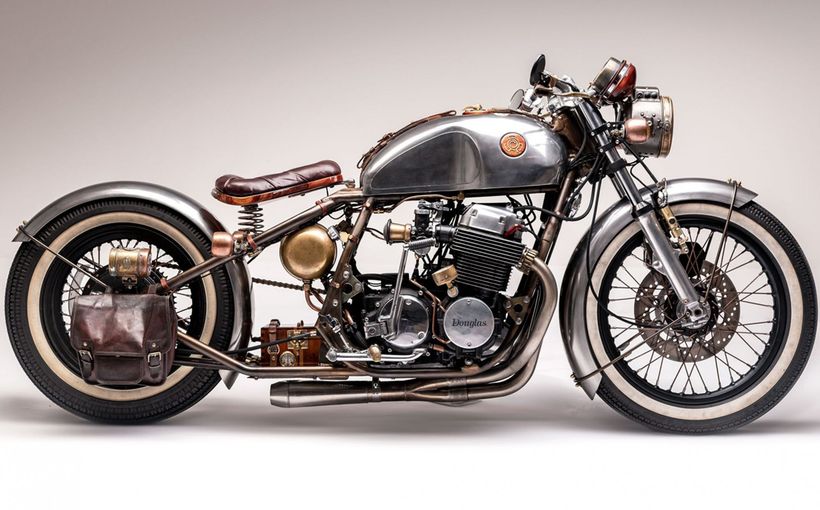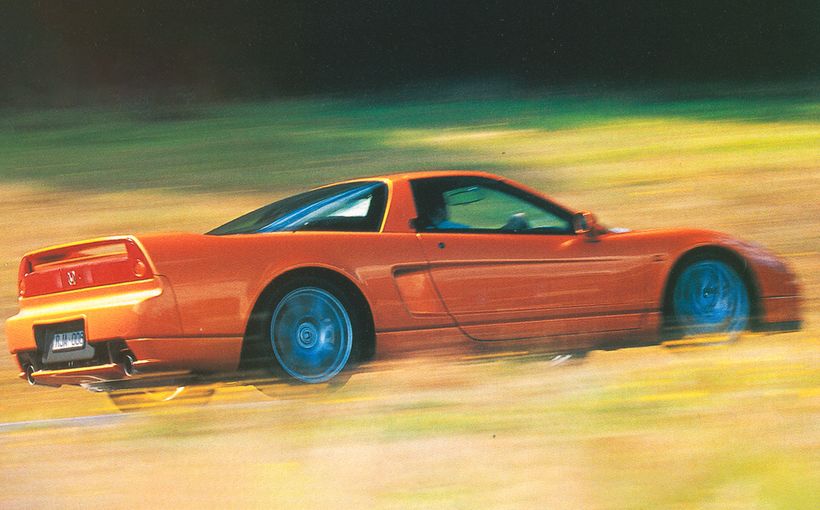Honda CX500 Turbo: Turbo Transverse Twin

Test: Jeff Ware Photography: Heather Ware
The Japanese manufacturers went about building their turbo bikes in vastly different ways, not wanting to copy the other. A huge amount of testing and development went into the CX500.

The engine was heavily modified and the 500 was the first ever bike with a dedicated computer-controlled engine management system and it worked well. The CX was fuel injected, also a first, and had multiple sensors measuring boost, air flow, air temperature, engine temperature, rpm, throttle position and crank position, camshaft position and load. The ignition and fuelling were both computer controlled and there were default settings in place that could get the owner to a Honda dealership or home in a limp mode in just about any situation. This is, of course, an amazing achievement for the era and must have cost Honda serious bucks.

Honda decided to front mount the turbo between the V of the 80º cylinders, to take advantage of cool air. Of course, what the trade-off was is extreme heat generated by the turbo and thus a lot of hot air around the fuel rail and tank. Hot fuel can have a s bad an effect on combustion efficiency as hot air does in a turbo system. Front mounting the turbo also reduces lag a little on the CX but header length dictates that it is not as effective as the GPz set-up.

The CX turbo draws through an oiled foam filter, not ideal and easily swallowed once deterioration sets in. From there, there is a long intake pipe to the turbo and on the compressed side another long turbopipe leading the the plenumn chamber, which is a plastic sealed airbox in this case. The compressed air then needs to pass through yet another set of plumbing to the intake manifold and even through a set of reeds. No wonder there is lag! The set-up is not ideal but it’s not bad for the era.


The 500 was the first mass produced turbo motorcycle in the world. There had been limited run turbo bikes in the past but not a mass-produced model. It was also the first motorcycle to feature EFI when it was released in 1982. Although the pushrod V-twin was an old design and had remained unchanged since 1977, it did have some benefits. It was liquid-cooled, had strong cases, produced strong torque by geometry and could help keep costs to a minimum.

Honda beefed up the internals including the crankshaft, reduced compression and fitted complex for the day EFI and a little 51mm turbocharger that was front mounted nice and close to the exhaust headers, with a single dump pipe looking very cool on the right-hand side, exiting via a muffler with huge TURBO badge. The turbo location reduced lag and was a good move.


The CX500 featured TRAC anti dive, air-assisted adjustable rear Pro Link suspension and twin front rotors with two-piston floating calipers. As a sport-touring bike, it also had a big comfy seat and a tall screen with upright riding position.

I hop on and familiarise myself with the 500. It is really comfy. A wide, soft seat with a tall screen and high ‘bars. The kind of bike you could ride all day long. It also has that Honda quality, with some nice touches around the dash area and good quality paint and graphics. It looks good, 40-years on…
Clutch in, select first (no clunk) and off I go. I ease around for the first lap due to the age of the tyres. So, once I get a feel for the brakes and tyres I actually start to push and I am surprised. This thing really goes pretty hard!

The CX500 Turbo is peakier than I anticipated and once the turbo spools up (there is some lag) the power hits quite hard for a short period of time before tailing off painfully, when the bike gets asthmatic…
Keep it spinning in boost, however, via the smooth and wide ratio five-speed gearbox, and you are rewarded with a torquey, punchy bike that offers the pull of a much larger capacity motorcycle.
The old school power delivery is fun – nothing then ‘boom’ a quick rush that sees the skinny forks extend to full length and it really does make me grin as I lap on the old beast.

The handling is the big surprise. Wow. For a bike that looks like a Moto-Guzzi on acid I can’t believe how well it steers and tracks through a turn. Front-end confidence is high and I’m shocked. It seems Honda had their geometry numbers a step ahead of the other brands even back in 1982…
The brakes are also fantastic – another surprise.
At the end of my 30-minute test I’m absolutely blown away. How can a bike that looks like this feel completely different?
I wander down to the next bike and fire it up – the mighty 1983 CX650 Turbo, the bike that replaced the 500 after just 12-months. Next week on shannons.com.au, I will tell you all about that one!

SPECIFICATIONS HONDA CX500 TURBO
Engine: Turbocharged liquid-cooled 80º east-west V-twin pushrod four-valves per cylinder four-stroke, 498cc, 7.2:1 compression ratio, 78 x 53mm bore x stroke, five speed gearbox, wet multi-plate clutch, shaft final drive, EFI.
Chassis: Tubular steel frame, Showa conventional forks with TRAC anti-dive, Honda Pro Link rear with Showa air pressurized shock, dual rotors with twin piston calipers (f) and single rear rotor, 100/90-18in (f) and 120/90-17in (r), 220kg dry, 263kg wet weight, 20L fuel tank capacity
Performance: 82hp@8000rpm, 59ft-lbs@5000rpm
TOP SPEEDS (OFFICIAL FACTORY CLAIM)
CX5 – 205km/h
1/4-MILE TIMES (OFFICIAL FACTORY CLAIM)
CX5 – 12.3@106mph

Protect your motorbike. Call Shannons Insurance on 13 46 46 to get a quote today.








